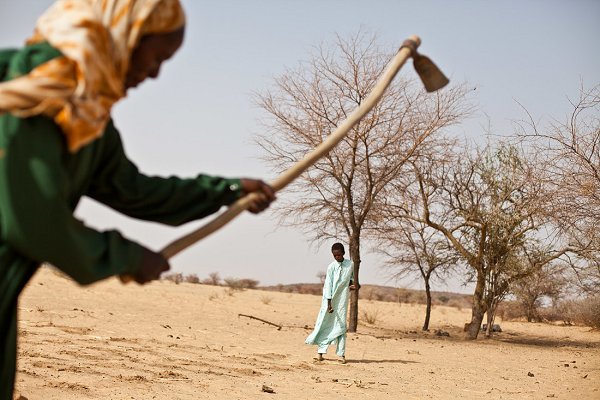
‘What does not get measured cannot be managed’

(This article appeared first earlier this week on the World Bank’s Let’s Talk Development site. It has been edited slightly here for length.)
How do we, as development practitioners charged with designing and implementing projects, really know that these projects are delivering on their intended outcomes and improving beneficiaries’ quality of life? And how do we learn from our successes and failures to improve future projects?
How do donors and development partners providing the resources for these projects know that taxpayers’ money has been used to support poverty reduction, economic growth, and other goals, or even simply that the finance went to “good use”?
These questions are not new to international development. Measuring development effectiveness has been a priority, and a persistent challenge, for decades. However, when the projects in question are related to “resilience”, the challenge seems to become amplified.
Resilience is a complex concept with many competing definitions and can be observed only when a shock occurs. As a result, it is difficult to measure and monitor.
Perverse incentives?
Many of us feel that we will become better able to improve resilience if we can quantify it. As the saying goes, “What does not get measured cannot be managed.”
This leads us to immediately grasp for that universal, perfect indicator to measure resilience and compare projects based on the resilience benefits they generate.
However, the quest for a resilience indicator has been challenging. Many indicators have been proposed; each has its strengths but also its weaknesses.
Particularly worrisome is the fact that any imperfect indicator – with its inability to measure exactly what we want – can easily lead to perverse incentives for practitioners, and favour outcomes that are very different from those intended.
We have published a short paper entitled What cannot be measured still needs to be managed. It reflects on these issues, highlighting how well-intended indicators can lead to perverse incentives. It draws upon detailed examples from other domains in which defining objectives and measuring outcomes is difficult.
In education, criminal justice, and health, poorly-defined indicators have led to ill-considered incentives and poor outcomes. Teachers have been found to “teach to the test”; policemen have been found to focus on the crimes that are easiest to solve; and making mortality rates publicly available has made it more difficult to find surgeons to operate on high-risk patients.
‘Resilience is a complex concept
with many competing definitions.
It is difficult to measure and monitor’
Similar problems are likely to result from imperfect resilience indicators if they are implemented without care. To help avoid these issues, we propose seven “thought experiments” by which a resilience indicator can be tested, so that its potential drawbacks can be identified early on.
For example, counting the number of people benefiting from increased resilience would favour projects delivering small changes to many people, maybe at the expense of more transformational projects that target the most vulnerable.
Considering the amounts invested in resilience may favour solutions that are capital-intensive and costly, at the expense of smarter and cheaper options. And using a traditional cost-benefit analysis based on avoided losses would favour interventions targeting richer households, at the expense of actions for the poorest who own next to nothing and therefore experience limited losses in absolute terms.
Taken together, the seven experiments can inform decisions around whether or how to institutionalize a resilience indicator, based on its benefits and risks.
We need to monitor and evaluate the progress of our projects. But to avoid the pitfalls of pursuing the “perfect indicator”, we suggest adopting a set of complementary approaches that help tell a more comprehensive and more nuanced story.
The struggle to achieve food security in Chad. This photo provides the cover of CARE’s 2017 report Integrated Risk Management Explained – the chief methodology underpinning the Partners for Resilience programme worldwide.